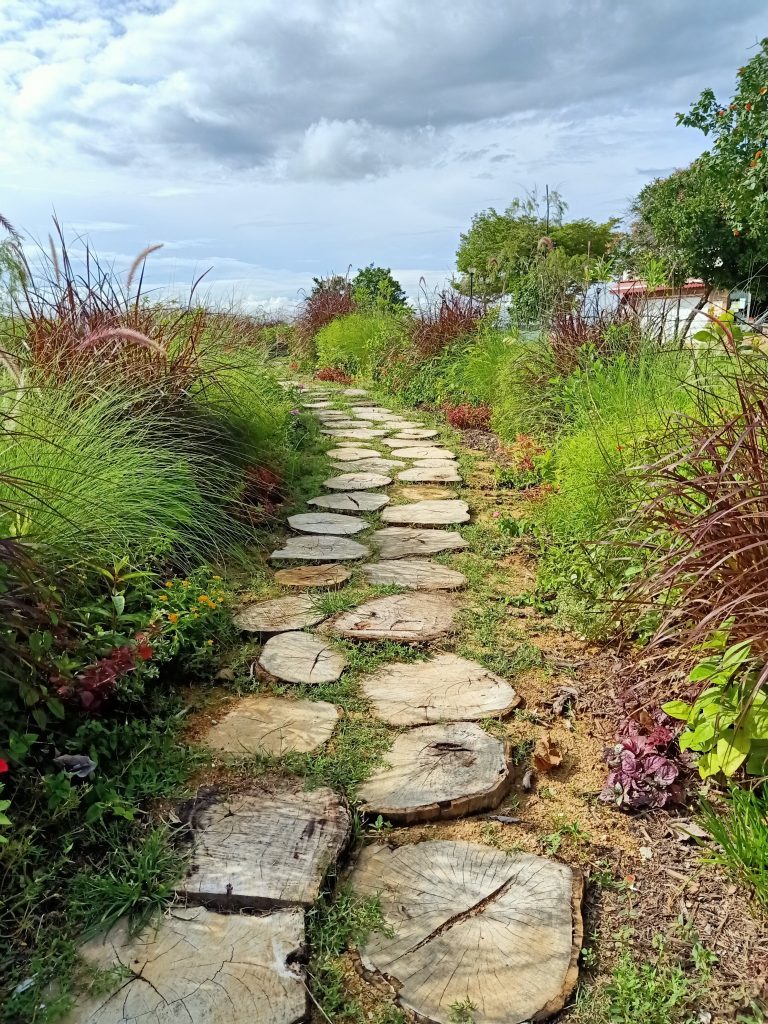
I first encountered the Buddha in my school textbooks, as the Shakya prince Siddhartha Gautama, from one the few republics in ancient India, who renounced royal life in search of Nirvana. His teaching of the Four Noble Truths and the Eightfold Path had led to far reaching changes in the historical, political, social, religious, and even literary landscape of his time and thereafter. His teachings, committed to memory so long ago, still reverberate in my mind even today, as I practice mindfulness in daily living.
My next encounter with the Buddha came while studying the Gandhara and Kushana styles of art as examples of Buddhist art and architecture in India. His serene smile, the haloed curls, the meditative mudras, and the lotus, all became etched in my mind forever. I then drew the Buddha for the school’s annual art exhibition.
A few years later I visited the Karla caves in Maharashtra, an important Buddhist site that has the biggest Chaitya (a prayer hall with a Stupa, usually for assemblies) in India. These caves once marked an important trade route between the Arabian Sea and the Deccan. They were big, dark, and isolated, far from habitation and surrounded only by hills and forests, but there was a strange sense of peace there, that had the smell of centuries.
Much later, I visited the Buddhist monasteries in Dharamshala, Coorg, and Leh, symbols of Tibetan Buddhism (Mahayana of 8 CE) that had percolated back to India over centuries. Thus far, my view was merely touristy. The Buddha remained distant, to be encountered only in far off places.
But, since the past few years, living in South East Asia has brought the Buddha closer.
Visiting the Buddha temples here, as well as in neighbouring countries in South East Asia, and even Japan, and witnessing and partaking in the local Buddhist practices has left a unique impression on my mind. I am amazed at the vastness of the spread of Buddhism, and its practice by so many different people, so far away from India.
Though the form of the religion here appears to be vastly different from what it was when it started between the 6th to 4th century BCE, it continues to remain faithful to the core teachings of the Buddha. Here it is very dynamic indeed, a very living and evolving entity, well-assimilated in the daily lives of the people. I feel closer to it than ever before.
Everywhere I see the Buddha, I am fascinated with the many forms I encounter. The myriad cultural variations and embellishments that adorn him are not just strikingly beautiful, but also symbolise the intense personalisation of the Buddha. In each country’s artistic representation, the Buddha’s postures and meditative mudras and moods remain the same. Yet, there are culture-specific differences in his physical features and attributes, in the materials (ranging from stone, metal, wood, lacquer, or concrete) used in the making of the statues, in the temples that house him, and the rituals that surround him. I find this beautiful amalgam of cultures in the Buddha very interesting. He seems to me to be the very embodiment of the universal values of kindness, compassion, love, peace, respect, and humility, so well-regarded and respected by so many.
Encountering the Buddha again and again in the region has kindled a desire to learn more. I try to expand my understanding through books, exhibitions, and documentaries, on the Buddha, Buddhism, regional history, and the Silk Road. Ongoing exhibitions at local museums, the immense resources at the public libraries, the Soka Association’s extraordinary exhibition on The Lotus Sutra, the Smithsonian’s Freer Gallery’s exhibition ‘Where Asia meets America’ in Washington DC, and even Emperor Asoka’s edicts that I have seen and read about long ago in books and museums in India, have opened my mind to a vast treasure trove on the Buddha and Buddhism. An online course on Buddhist Philosophy during the pandemic, has helped me understand, in greater depth, the core principles of Buddhism.
My interest in the Buddha, at present, is more esoteric, personal, and academic, rather than institutional. I hope to continue learning more and more through books, in the here and now, and through my travels abroad, as and when they happen in the future.




